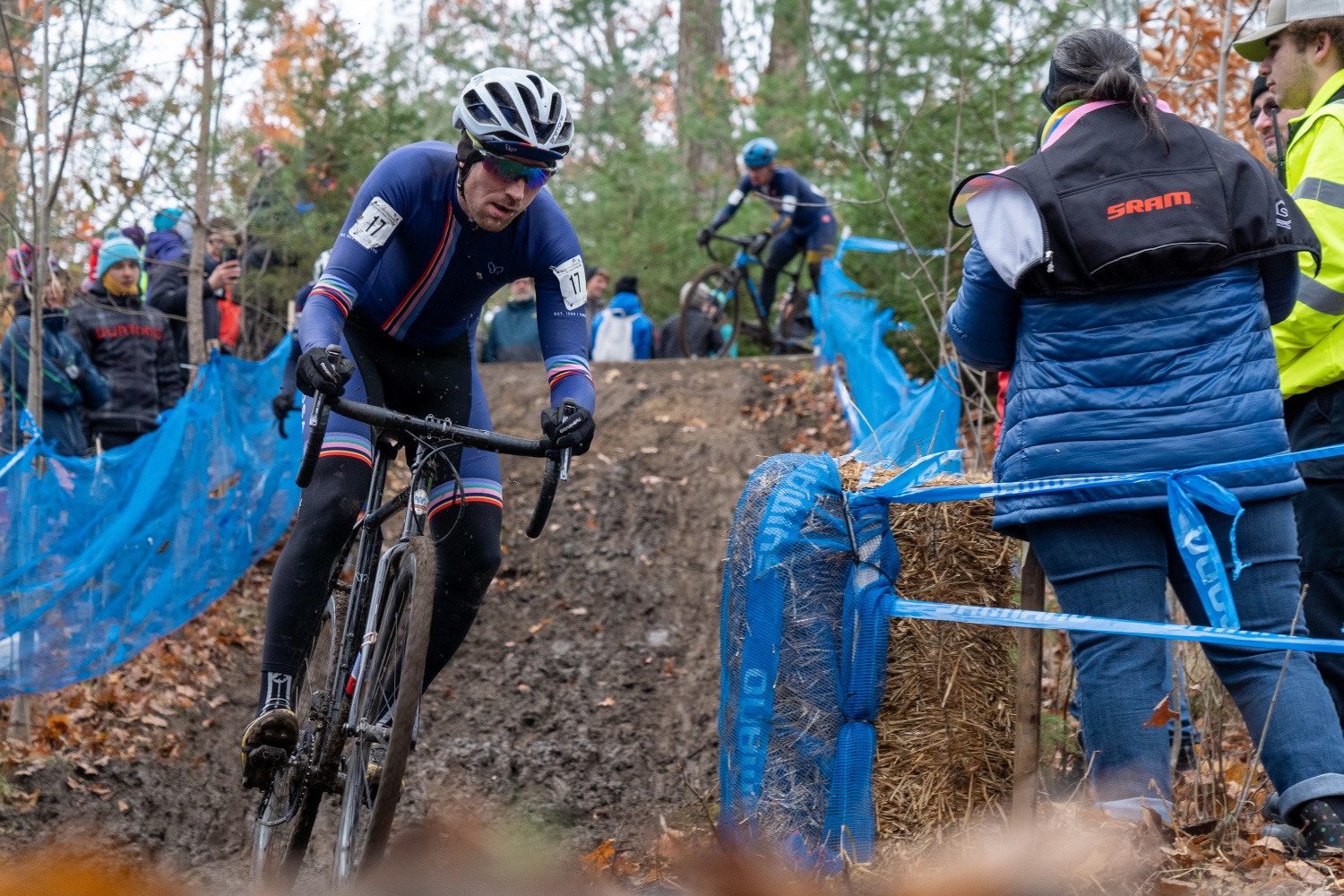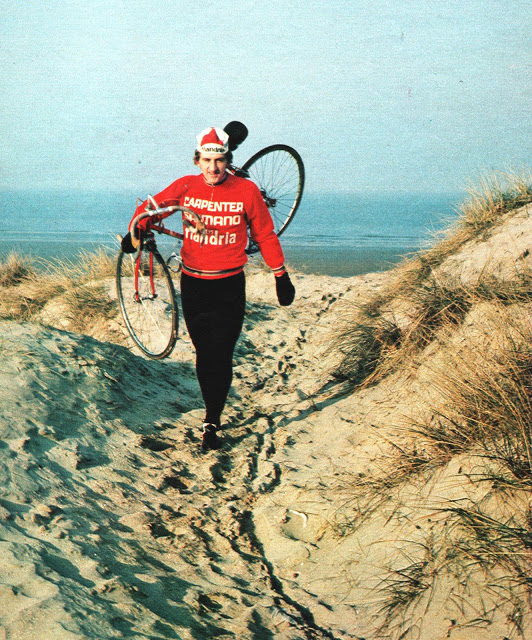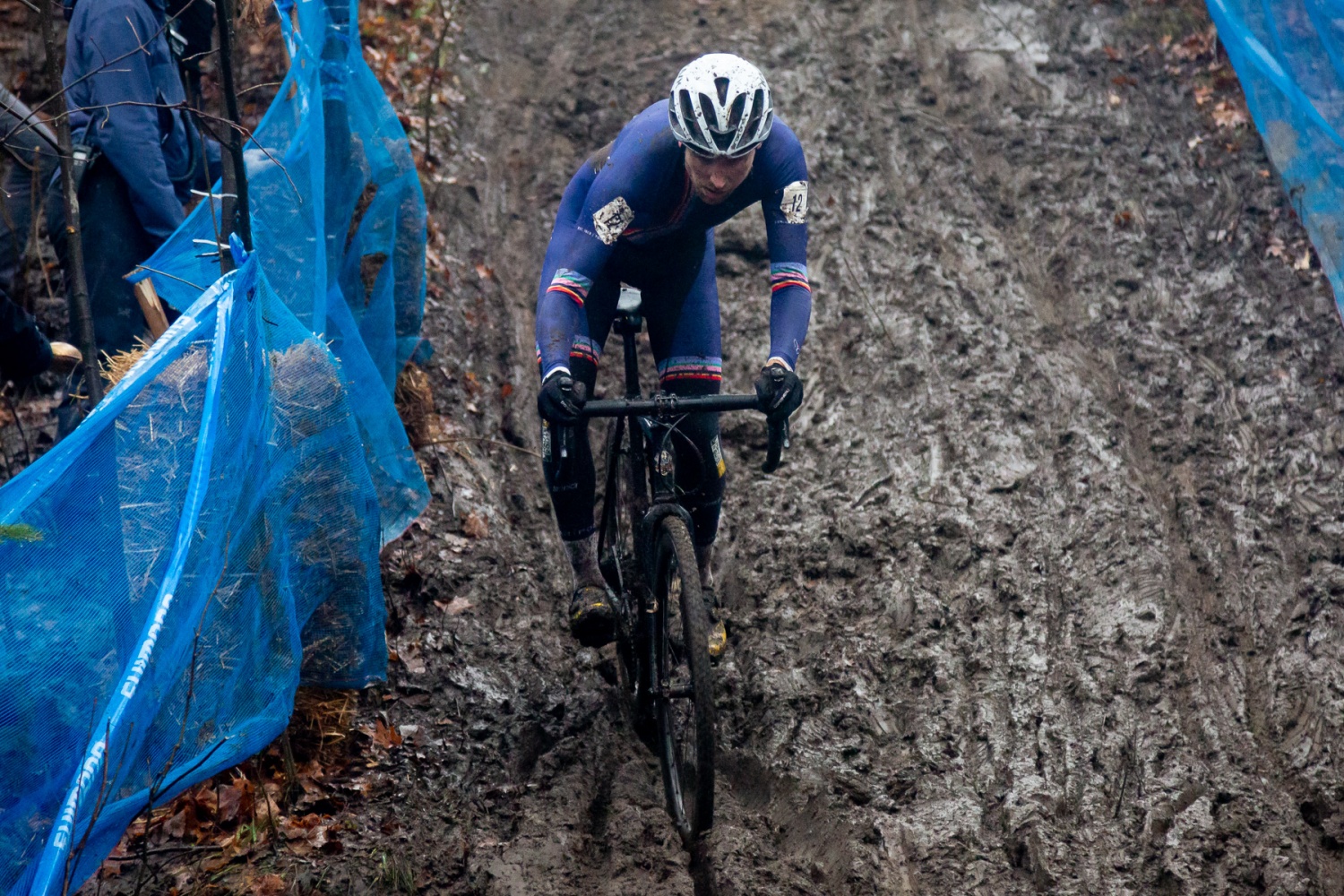In a peloton hurtling down a mountain in the rain, or thrashing over slick muddy cobblestones, or coming into a final turn at 60 km/h, it is evident which riders are on their limit and which are in their element and can maneuver their bikes with ease. Over the past twenty years, professional cycling has become increasingly competitive, fast, and technical due to many factors. The complexity in traffic calming infrastructure on the roadways, the internationalization of the peloton, the development of equipment and the proliferation of data analysis have all increased speeds and decreased the gap between the fastest and slowest riders. As a result, bike handling skills, versatility, and adaptability have become differentiating factors between riders. Those who have grown up riding several cycling disciplines, whether track, cyclocross, mountain bike, BMX or road, will be more competent cyclists and, likely, more successful racers. Being singularily focussed can be detrimental to a rider’s development.
Many of the protagonists and stars of the shortened, condensed and thrilling 2020 professional racing season come from a background of cyclocross or mountain bike racing. Sepp Kuss, once a mountain bike racer, shredded the peloton in the mountains at this year’s Tour de France, Dauphiné Libéré and Vuelta a España, while his teammate Wout Van Aert, was the most dominant and consistent rider of the road season, winning on every terrain. And, he’ll return to cyclocross racing for a handful of events this December.
The highlight of the season may have been at the Tour of Flanders when World Cyclocross Champion, Mathieu Vanderpoel and his career long cyclocross rival, Van Aert, rode away from the peloton. The Tour of Flanders is one of the toughest one day cobbled Classics on the pro road racing calendar due to the undulating, sinuous, technical circuit. It is a race where the fight for the front of the peloton is unrelenting and where riders do not only need to be powerful and aggressive but also attentive and focused over the nearly six hours of racing. The duo’s superior bike handling skills as they flew over the challenging terrain were evident. Under pressure, they remained calm on their bikes. They cornered on the wet roads with more confidence than their rivals. They navigated the twisting and narrow roads at speed and allowed their bikes to float beneath them to absorb the vibrations caused by the cobbles. They powered up the steep slick climbs in the saddle while their rivals flailed behind. They are an example of how every cyclist should look on a bike; their physiques, pedaling fluidity and bike handling skills were developed off road.
Riding and racing on dirt, grass, sand or adverse terrain, forces a cyclist to learn key skills, which are drawn on throughout the races. The more agile riders not only benefit from marginal gains as they can bunny hop curbs, navigate around obstacles in the road and ride the best lines on technical portions of the course, but they also tend to crash less and have a higher probability of a prolonged professional racing career. Undoubtedly, their reaction times are better from maneuvering through technical offroad courses at speed.
To maintain traction on a muddy slope, a cyclist must learn to balance his/her weight over the rear wheel while pushing the pedals with smooth yet powerful strokes so the wheel doesn’t spin out. As a result, cyclocross and mountain bike racers become aces at riding uphill while seated. The pedal stroke learned and used while riding up a slick dirt climb, not only improves efficiency but also develops the rider’s muscles and technique so that climbing for prolonged periods in the saddle is easier. Over a long mountain pass, a rider who stays seated is more aerodynamic and, therefore, more efficient than a rider who climbs out of the saddle, as frontal surface area is increased when standing on the pedals. Seated power not only benefits a rider while climbing but also improves the potency of the pedalstroke for time trials. To build their muscles and improve their seated power, Bradley Wiggins and his British Cycling and Team Sky teammates would ride up mountains in their time trial aerobars to force themselves to stay seated while allowing their muscles to adapt to the position.
Winters in the dunes of Lombardsijde is where Freddy’s power came from.
Another way of developing seated power, a strong core and powerful pedal stroke is by riding over grass and sand, where there is greater resistance and the terrain forces the rider to stay seated. Even back in the 1970’s, World Road Champion and Belgian icon, Freddy Maertens, would ride in the sand dunes on the North Sea over three hours sessions to develop his power and pedal stroke. His teammate once told me that to make the workout even harder Maertens would often ride a fixed wheel bicycle.
Adverse conditions, such as deep mud, or sand, or slick roads, force the rider to be in tune with the bicycle so that it feels as though it is an extension of the body. In a dance of agility with the bicycle, the rider learns how to shift his/ her body to weight the pedals, the bars and the saddle, so that the bicycle tracks as it should, without veering off line, or sliding out. And, as those techniques are improved, speeds increase, the rider becomes more comfortable and calm, allowing him/her to focus solely on the effort.
Because mountain bike and cyclocross races are not typically as long as road races, the racing intensity is high from start to finish. There are obstacles throughout the course, which not only require a high level of concentration to navigate, but also explosive power to ride over. Mountain bikers and cyclocross racers tend to be strong all-arounders as a result. Explosive power is what is required to follow the attacks, breakaway from the peloton on the road and win a bunch sprint. Recent Giro d’Italia Champion Tao Geoghegan Hart grew up in Central London riding cyclocross, track and road races. Current World Road Champion, Julian Alaphilippe was a top international cyclocross racer. USA Cycling has recruited several of its top National Team pursuit riders from the NICA high school mountain bike program and from BMX, including Jennifer Valenti, who is a 2016 Olympic Silver Medalist and has won 4 UCI World Championship titles, capturing a total of 9 World Championship medals.
Another benefit of racing cyclocross is that because it is a winter sport and the races often take place in cold, wet, snowy, nasty conditions, the body adapts better to riding in inclement weather, which can make or break a rider in the mountain stages of the Grand Tours, or during a cold wet Classic. When it is cold and wet half of the peloton would already prefer to be at home by the fire with a cup of tea. A rider who relishes the adversity already has an advantage before the starter’s pistol fires.
Through my racing career, I saw many impressive performances–some were based on brute strength, others tactical savvy, and others bike handling skills. Some were a combination of all three. Over the last decade Peter Sagan has been one of the dominant riders in the pro peloton. He’s won Classics, World Championships, points jerseys in the Tour de France, and stages in most races. Early in his career, during the Tour of Switzerland, in the final kilometers of the race, we tore down a hill on wet roads, wound our way through the town, made a few sharp turns and then sprinted for the line. The speed was high and the peloton was lined out as we entered the town. A few riders up front jockeyed for position while they veered through the wet turns as quickly as possible. In the final dash to the line, Sagan was in the lead, but pulled his foot from his pedal, almost crashing into the barriers lining the road. At this point, if they hadn’t already crashed, most riders would give up, and roll to the line without contesting the sprint. After having already lost several bike lengths to his rivals, Sagan, clipped back in, resumed his sprint, surged past his rivals and won the stage. Not only did he avoid crashing, but he remained calm, found his footing, and then had the power to double his effort. Sagan comes from a background of cyclocross and mountain biking which helped him develop the skills and mentality that differentiate him from the rest.
As the weather turns, ride in adverse conditions on days when you might prefer to stay on the trainer as you’ll develop technique, knowledge and muscles that will improve your overall abilities as a cyclist.
By Michael Barry
Feature Image Photography by Jody Wilson



Right on the nail Michael. I remember watching Peter Morse riding in the Midweek criteriums. These events were originally on a technical circuit, with a couple of really sharp corners. When the circuit was wet, Peter would literally float round these, with rear wheel sliding slightly, utilising his off-road skills to maintain his speed and composure. It was a joy to watch. Say ‘hi’ to Peter from Kit and myself.
Thanks Peter. You’re right, there aren’t many guys who understand tire pressure and cornering on the limit than Peter Morse. Years of cross and mountain biking have taught him well.
Agree completely with your perspective on the value of bike handling skills learned in other than road riding. The point seems, “become more agile, tougher and willing to push limits under any conditions.” How about the reverse? Are there some useful road riding lessons for off-roadies?
Thanks Ford. As it is hard to get the hours in the saddle, and consistent pedalling time and power output on the trails volume and intensity on the road is essential in building fitness. Most of the top level mountain bike and cross racers I know do the majority of their interval and distance training on the road and then develop their technical skills on the dirt.